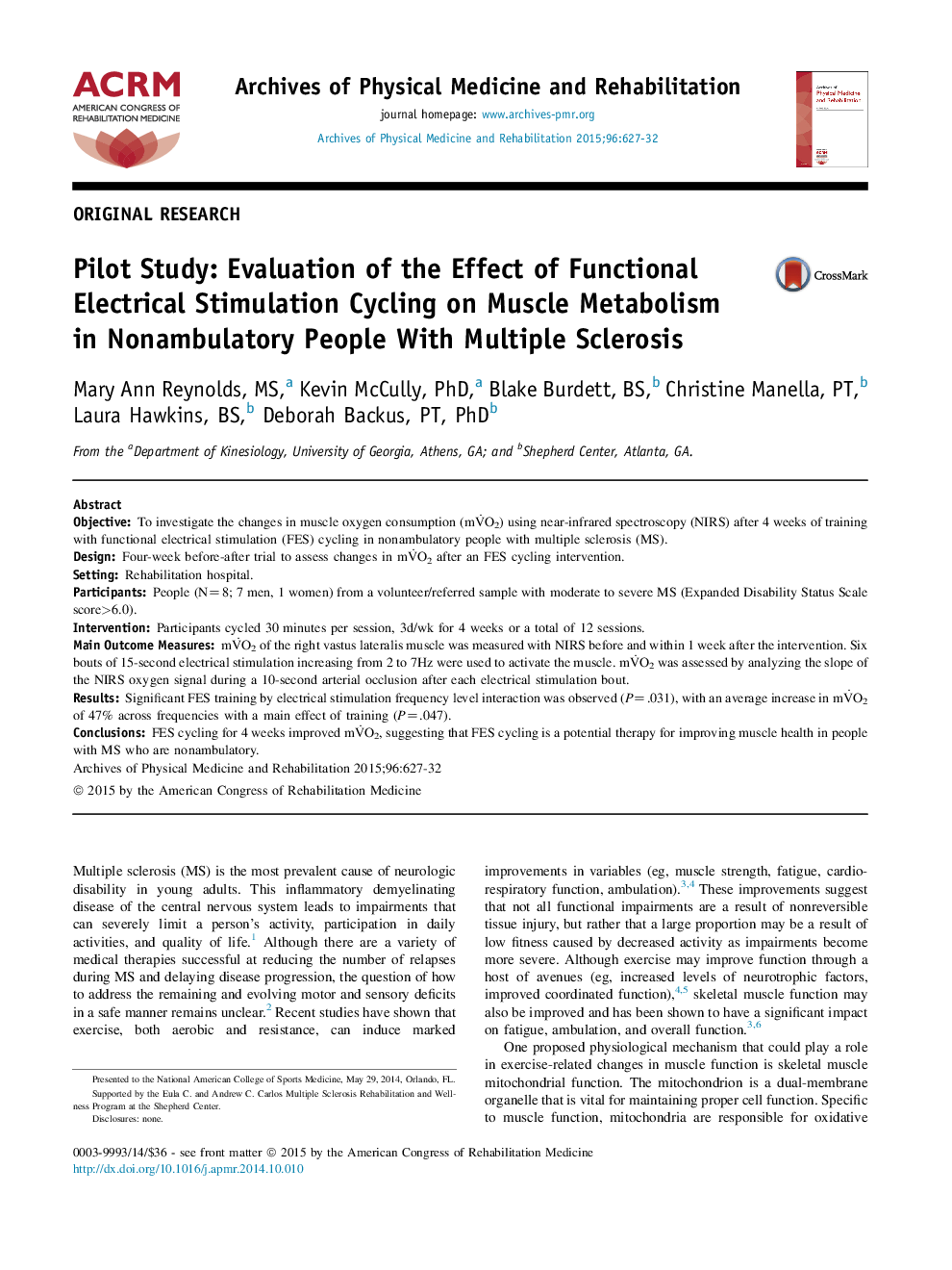| Article ID | Journal | Published Year | Pages | File Type |
|---|---|---|---|---|
| 3448155 | Archives of Physical Medicine and Rehabilitation | 2015 | 6 Pages |
ObjectiveTo investigate the changes in muscle oxygen consumption (mV˙O2) using near-infrared spectroscopy (NIRS) after 4 weeks of training with functional electrical stimulation (FES) cycling in nonambulatory people with multiple sclerosis (MS).DesignFour-week before-after trial to assess changes in mV˙O2 after an FES cycling intervention.SettingRehabilitation hospital.ParticipantsPeople (N=8; 7 men, 1 women) from a volunteer/referred sample with moderate to severe MS (Expanded Disability Status Scale score>6.0).InterventionParticipants cycled 30 minutes per session, 3d/wk for 4 weeks or a total of 12 sessions.Main Outcome MeasuresmV˙O2 of the right vastus lateralis muscle was measured with NIRS before and within 1 week after the intervention. Six bouts of 15-second electrical stimulation increasing from 2 to 7Hz were used to activate the muscle. mV˙O2 was assessed by analyzing the slope of the NIRS oxygen signal during a 10-second arterial occlusion after each electrical stimulation bout.ResultsSignificant FES training by electrical stimulation frequency level interaction was observed (P =.031), with an average increase in mV˙O2 of 47% across frequencies with a main effect of training (P=.047).ConclusionsFES cycling for 4 weeks improved mV˙O2, suggesting that FES cycling is a potential therapy for improving muscle health in people with MS who are nonambulatory.
